The company's main products are HGM series micro pulverizer, superfine micro pulverizer, micro pulverizer, superfine pulverizer, pulverizer and matching hammer crusher, etc.
14/07/2022 admin
Sand and gravel aggregate is the largest, irreplaceable and indispensable material for infrastructure construction such as buildings, roads, bridges, water conservancy, hydropower, etc. It is closely related to the survival and development of human beings and is the second largest natural resource after water consumption.
The sand and gravel aggregate processing system refers to the facilities for crushing, screening, washing, storage and transportation of sand and gravel aggregates. In the construction of water conservancy projects, the sand and gravel aggregate processing system mostly adopts the corresponding mining machinery.
Sand: generally, refers to particles with a particle size less than 4.75mm. Including river sand, mountain sand, lake sand, desalinated sea sand, etc. The thickness of sand is divided into 4 grades according to the fineness modulus:
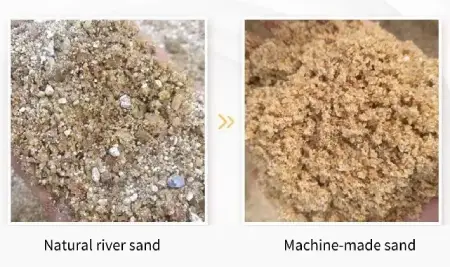
● Coarse sand: the fineness modulus is 3.7-3.1, and the average particle size is more than 0.5mm
● Medium sand: the fineness modulus is 3.0-2.3, and the average particle size is 0.5-0.35mm
● Fine sand: the fineness modulus is 2.2-1.6, and the average particle size is 0.35-0.25mm
● Extra-fine sand: the fineness modulus is 1.5-0.7, and the average particle size is below 0.25mm
The larger the fineness modulus, the coarser the sand. The fineness modulus of ordinary concrete sand is in the range of 3.7-1.6, and medium sand is suitable. Or use coarse sand with a small amount of fine sand in a ratio of 4:1.
Stone: refers to particles with a particle size greater than 4.75 mm. Commonly used are gravel and pebbles.
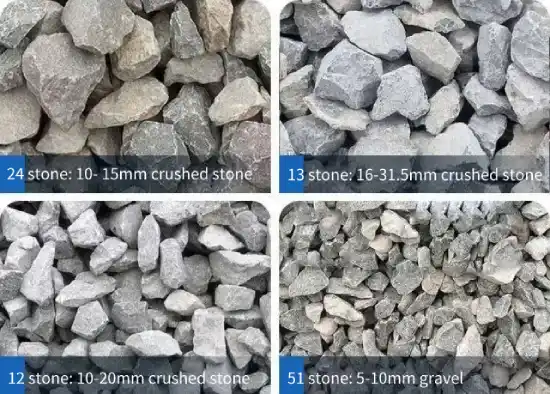
Crushed stone is a particle with a particle size greater than 4.75 mm made of natural rock or rock by mechanical crushing and screening. Pebble is a particle with a particle size larger than 4.75 mm, which is formed by natural weathering, water transport and sorting and accumulation of rocks.
In pebbles and crushed stones, the particles whose length is greater than 2.4 times the average particle size of the corresponding particle size are acicular particles, and those whose thickness is less than
0.4 times the average particle size are flake particles. (The average particle size refers to the average of the upper and lower limit particle sizes of the particle size.)
Natural sand and gravel are generally obtained by directly mining natural sand and gravel resources through screening. The machine-made sand and gravel are obtained by mining mines and ore through crushing, screening, shaping and other processing processes. The machine-made sand and gravel follow the characterization method of natural sand and gravel.
People usually refer to the sand and gravel collected from rivers, mountains and seas as river sand, mountain sand and sea sand, or collectively called natural sand and gravel, which is a natural mineral resource. With the increase in the amount of buildings, roads, bridges and infrastructure, as well as the reduction of natural sand and gravel resources and the protection of the environment to limit mining and other factors, mining stone has been used as the main source of machine-made sand and stone in recent years.
The minerals commonly used in machine-made sand and gravel are magmatic rocks, sedimentary rocks, and metamorphic rocks.
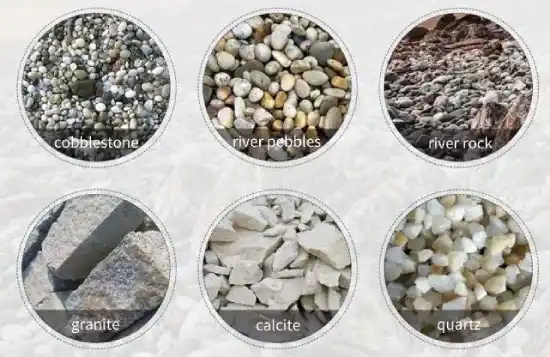
Magmatic rocks are divided into basalt, andesite, trachyte, rhyolite, granite, syenite, diorite, gabbro, peridotite.
Sedimentary rocks are divided into conglomerate, sandstone, siltstone, limestone, dolomite.
Metamorphic rocks are divided into marble, quartzite, gneiss, horn shale, serpentine.
Different mines have different physical and chemical properties of their ore.
The main process of the sand and gravel aggregate production line is divided into four steps, one is mining, the other is transportation, the third is crushing, and the fourth is screening. The mining machinery and equipment that will be used are mainly in the two procedures of crushing and screening. Crusher and sand making machine are the most commonly used equipment. Under the factors of different output and different raw materials of sand and gravel aggregate, the technological process and equipment configuration of the production line will not be different.
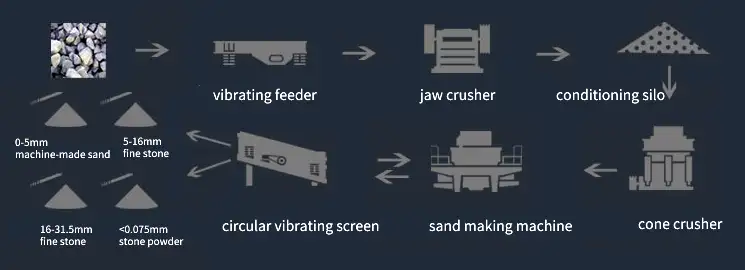
Process flow of the sand and gravel production line: the large stones are evenly sent to the jaw crusher by the vibrating feeder through the silo for coarse crushing, and the output coarse materials are conveyed by the belt conveyor to the hydraulic cone crusher for fine crushing. The stone enters the sand making machine for shaping, and the vibrating screen screens out different specifications of sand and gravel.
The whole sand and gravel aggregate production system is mainly composed of vibrating feeder, jaw crusher, hydraulic cone crusher, vertical shaft impact crusher (sand making machine), vibrating screen, belt conveyor and centralized electric control equipment. In order to meet the particle size requirements of different sand and gravel products, it can be equipped with impact crushers, dust removal equipment, etc. for optimal combination and classification.
Reasonable selection of crushing equipment can help producers to solve many problems, but when choosing crushing equipment, not only one reason, but multiple considerations. Crushing equipment is mainly affected by material type and hardness, water content, degree of cleavage, and particle size of incoming and outgoing materials. In addition, the construction site and output are also factors to be considered.
The type and hardness of the material are an important principle for choosing a crusher. The hardness of different materials is different. Usually, the hardness of the material is expressed by Mohs hardness. The Mohs hardness is divided into 10 grades. The higher the Mohs hardness number, the harder the ore, and the more difficult it is to break, and vice versa.
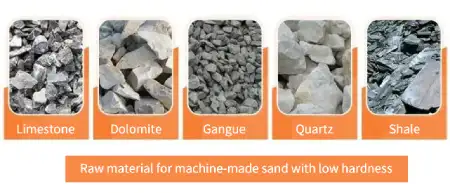
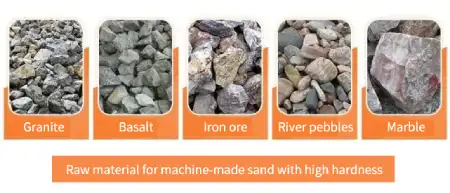
The moisture content of the material will also affect the choice of the crusher. When the water content is too large, the fine-grained material will agglomerate or stick to the coarse-grained material due to the increase in humidity, thereby increasing the viscosity of the material, reducing the discharge speed and reducing the productivity. In severe cases, it may even cause blockage of the discharge port, affecting the normal production.
The degree of cleavage development of the ore also directly affects the production efficiency of the crusher. When the ore is crushed, it is easy to break along the cleavage plane. Therefore, when the ore with developed cleavage is crushed, the productivity of the crusher is correspondingly much higher than that of the ore with a dense structure.
The incoming and outgoing particle size is used to judge the type and crushing level of the required crushing equipment.
If the content of coarse particles (large dry discharge port size) in the crushed material is high or the ratio of the largest block to the feeding width is large, the crushing ratio that the crusher needs to achieve (the particle size of the material before crushing and the size of the material after crushing) The ratio of the particle size of the material) is large, so the productivity is reduced. When the content of fine particles (close to or smaller than the size of the discharge port) of the crushed material is large, or the ratio of the largest block of ore feeding to the width of the ore feeding is small, the crushing ratio to be achieved is small, so the productivity is correspondingly improved.
The amount of output is also an important indicator to determine the selection of crushing equipment. It is conventionally understood that the higher the output requirement, the larger the size of the crushing equipment required, and the corresponding input and output will increase.
If you have some questions about our products, please feel free to fill out the form below, and we will contact you within 24 hours.